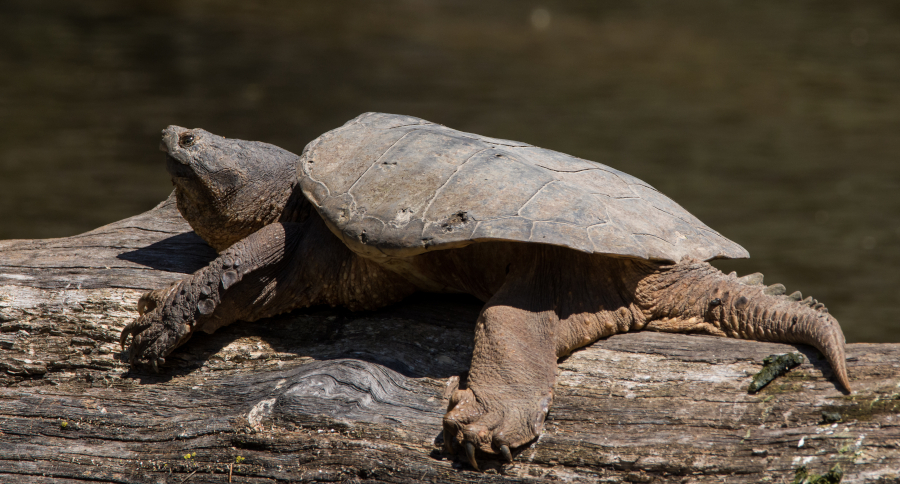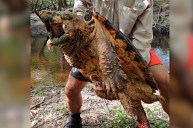Here is everything there is to know about snappers.
Almost everyone who loves the outdoors has run across a snapping turtle at some point or another. The common snapping turtle or Chelydra serpentina as it is known by its scientific name, is common throughout much of the United States and parts of Canada. Many an angler has hooked one of these reptiles accidentally while fishing.
This freshwater turtle has something of a nasty reputation because of its aggressive nature and today we are going to give some straight facts and dispel a few rumors about this common species.
This is everything you ever wanted to know about this large turtle, but never thought to ask.
What does a common snapping turtle look like?
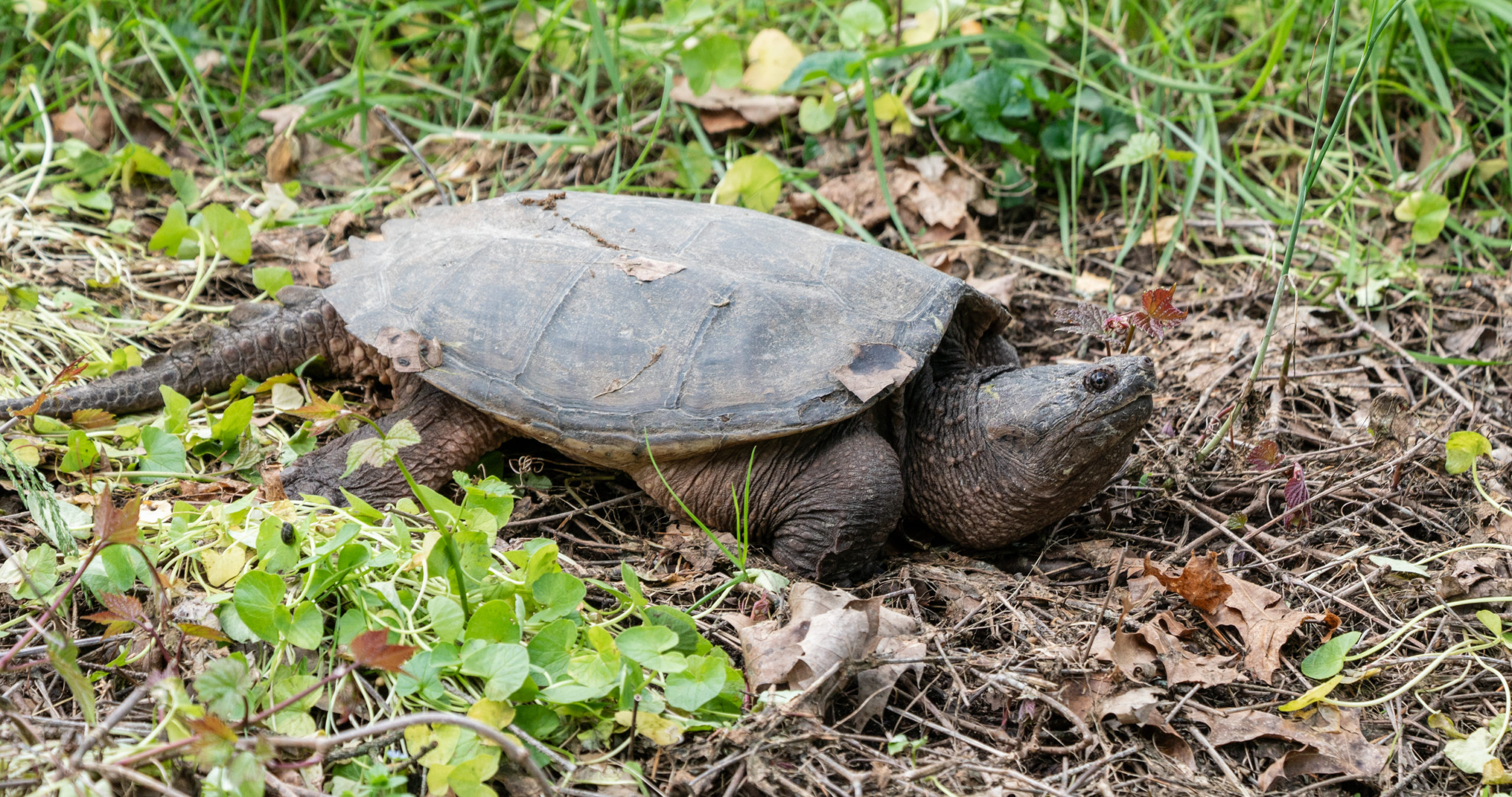
This turtle is sometimes confused with the alligator snapping turtle, but these are two distinct species that are set apart mostly due to their size. Most adults have a shell length between 8-18 inches at most. The majority of adult turtles weigh in the 10-12 pound range, but specimens weighing 30 pounds are sometimes encountered. This species does not grow nearly as large as the alligator snapper.
Speaking of the carapace (upper shell), that part of these animals is marked with ridges or "keels" as herpetology experts refer to them. These are usually more notable in younger animals and the shell tends to smooth out as the animal gets older. This is a good way to tell the difference between common and alligator snappers. Those keels are noticeably raised in older alligator snappers. The upper shell is often quite dirty, caked in mud, moss, or other aquatic debris. The underside of a snapping turtle's shell is called the plastron and is noticeably smaller to allow the turtle to use those muscular and bony-armored legs to propel itself through the water.
This is not exactly a pretty turtle. That bony armor appearance extends itself to the animal's long tail, which can often be the same length as the shell or longer. The last thing we need to talk about is the turtle's large head and long neck. Many people underestimate this animal's reach until it is too late, and they have taken a bite from that beak-shaped mouth and powerful jaws.
While the bite from a common snapping turtle can be quite painful, there are no records of this animal taking out "huge chunks of flesh" or "removing fingers." I distinctly remember being told by a relative once that they don't let go until they remove a chunk from you. However, it seems like these stories are mostly just urban legends that got wildly out of hand over the years.
Range and habitat of the common snapping turtle.
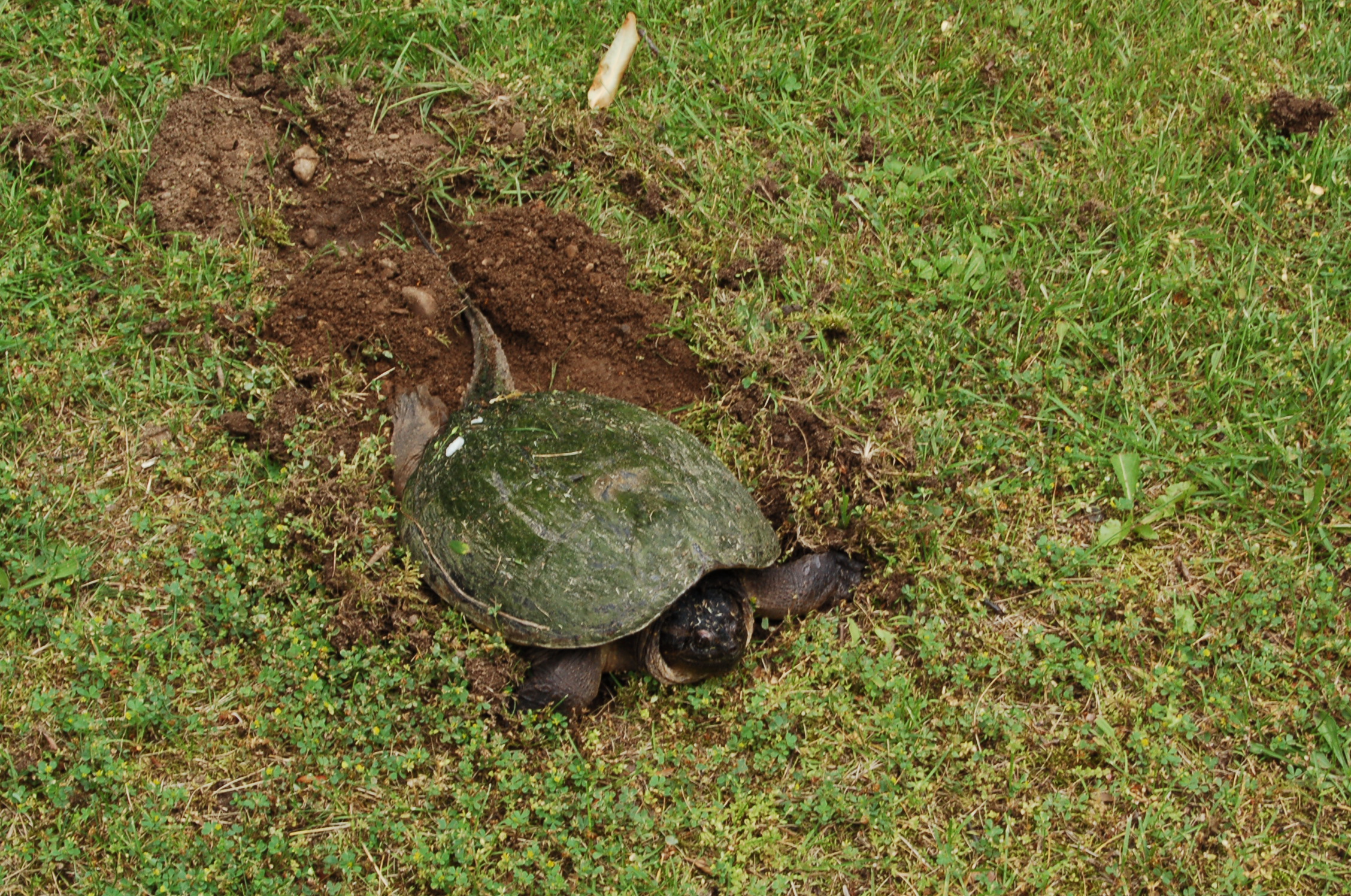
Travis Smola
This turtle is well-known simply because it has a wide range across North America. It is found in all the eastern parts of the United States and across the entire Midwest. Their range extends as far north as parts of southern Canada provinces like Ontario, Quebec, New Brunswick, Nova Scotia and Alberta and as far south as Florida and the Gulf of Mexico. Turtle populations range across much of the central United States and west into Montana, Wyoming and Colorado. Their range starts to peter out a bit on the edges of the Rocky Mountains where the elevation and winter temperatures start to climb.
As far as habitat, these turtles live most of their lives in some extremely nasty and brackish waters. They thrive in the shallow water of swamps, especially where there are extremely muddy bottoms. Common snapping turtles can be found in lakes, rivers, streams, drainage ditches, and ponds. While they do come out to bask rarely, most of their lives are lived in water. These turtles can sometimes be found in odd locations either because they are moving on to a new body of water or because they have left the water to lay eggs. Humans most often encounter these animals when they cross roads for these activities. Arguably, the majority of these turtles killed by humans are accidentally run over by vehicles.
Are common snapping turtles endangered?
This question is more common than you may think, mostly because people confuse the conservation status of this turtle with that of the alligator snapper, which is listed as vulnerable by the International Union for Conservation of Nature. Fortunately, North American populations of common snapping turtle are extremely robust thanks to the turtle's long lifespan and adaptability to a variety of environments.
While they are not endangered, it is worth noting that few hatchlings survive until adulthood. While a female snapping turtle may lay as many as 80 eggs during a single nesting event, these nests are frequently raided by raccoons, skunks, and other small mammals. The baby turtles that do successfully hatch then must survive years avoiding predators like herons, hawks and other birds as well as bears, coyotes, fish, snakes, and other predators common in wetland environments. It takes years for them to reach a size that keeps them safer from these threats.
What do snapping turtles eat?
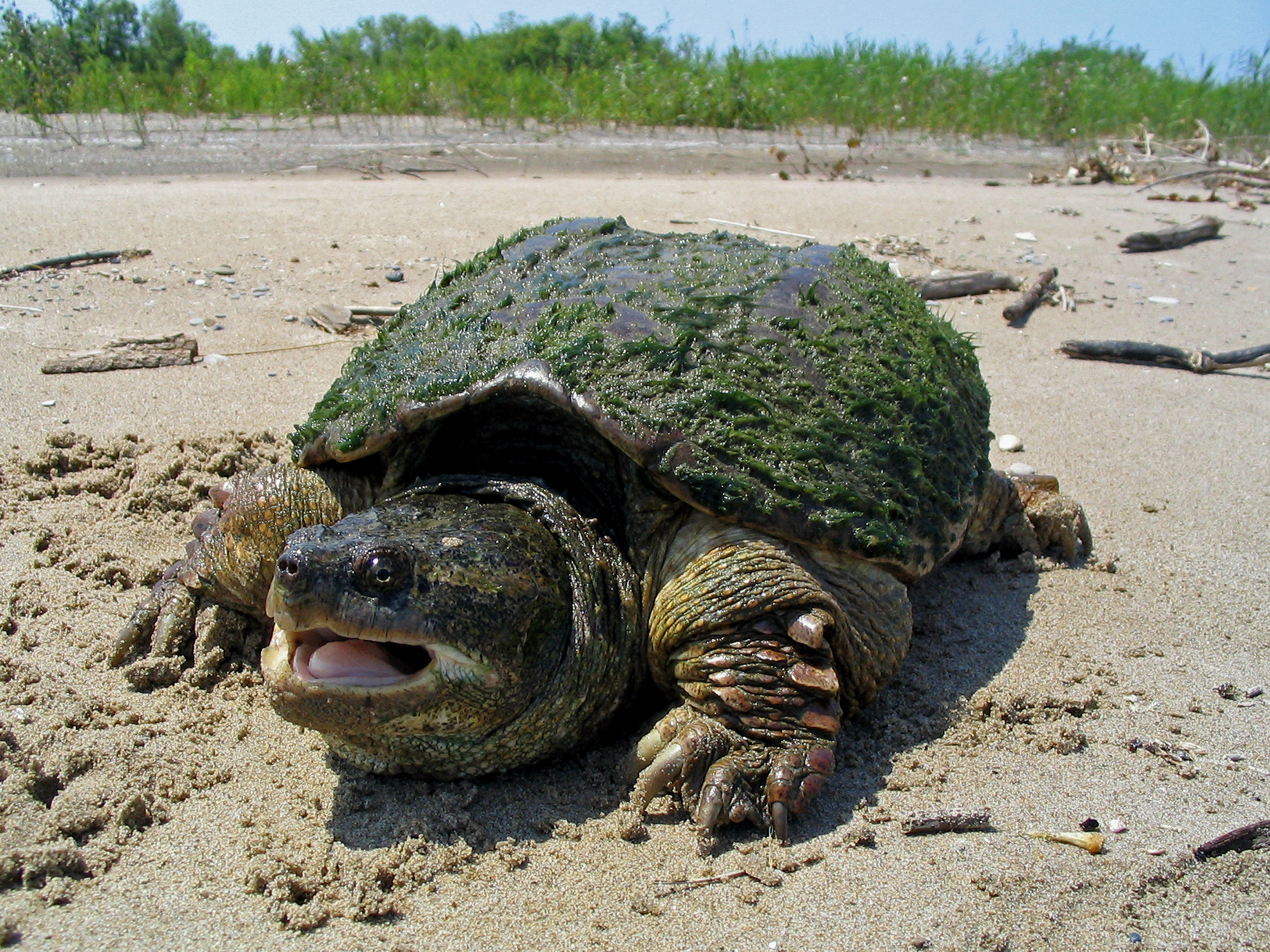
Many anglers and hunters probably think of the snapping turtle as primarily a predator. I have hooked them while fishing when they tried to eat my worm that was meant for bluegills. Many anglers have also had these turtles chase a struggling fish on the end of their hook. These turtles are not picky eaters. They also eat insects, crayfish, birds, mice, and even baby waterfowl on rare occasions.
Snapping turtles are omnivores, so they also readily consume plants, especially the aquatic plants that are common in the environments in which they live. Some turtles have also been known to scavenge carrion too. The turtle's adaptable diet is one of the reasons this species has been so successful for millions of year. Another myth about these turtles is that great numbers can be devastating on native game fish populations, but it is worth noting that the Connecticut Department of Energy and Environmental Protection states on their website that scientific studies found these turtles actually eat "insignificant amounts of gamefish." Like them or not, these animals are a natural part of the ecosystem and have been for a very long time.
Other fascinating turtle facts.
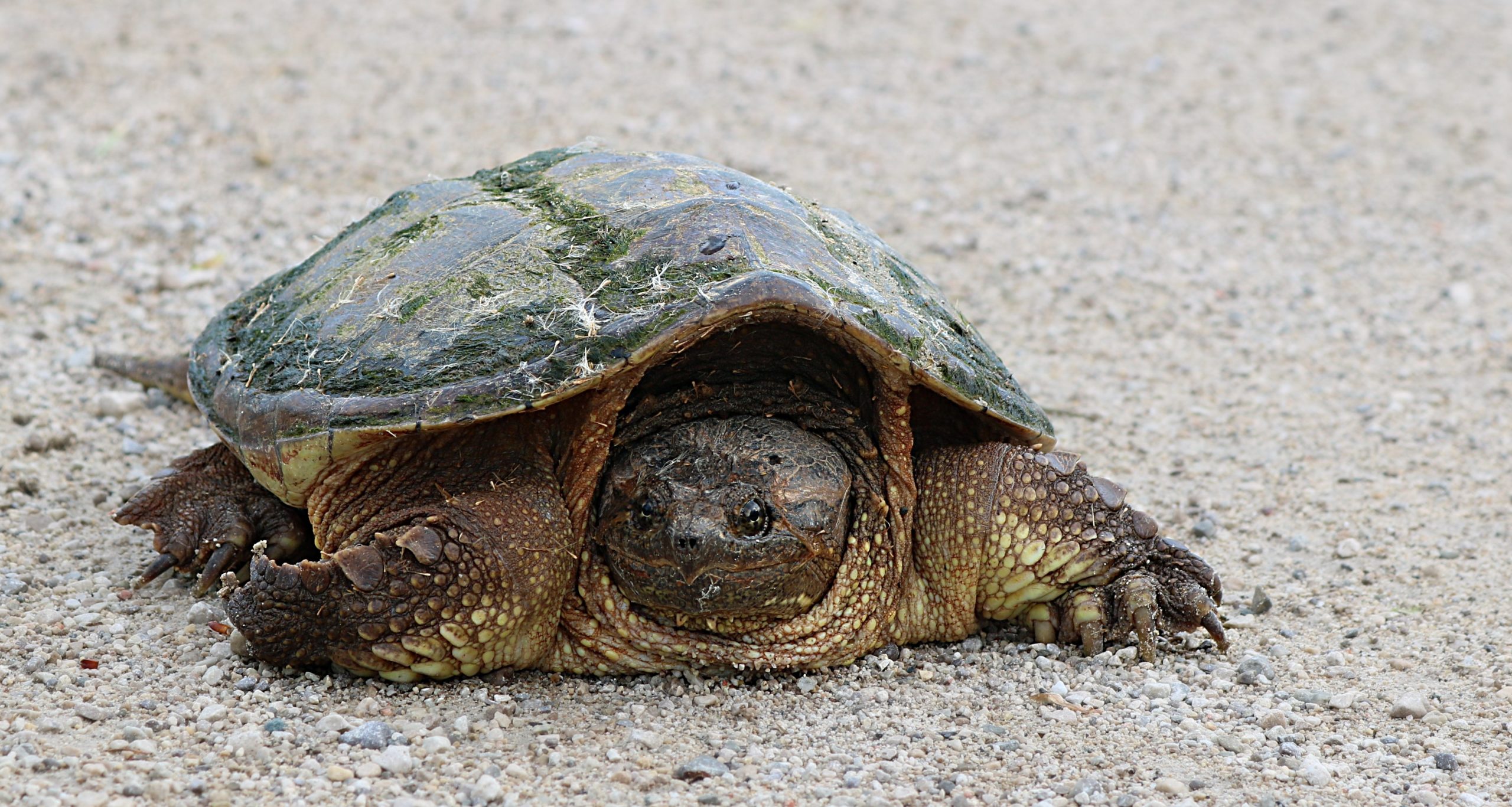
While these turtles have a face that only a mother could love and most people only enjoy them for a tasty turtle soup, they are quite interesting animals. For instance, the sex determination of turtles is entirely temperature dependent. If the nest is a hotter temperature, it will result in eggs hatching males only while a cooler nest will produce only females. Eggs have to be maintained in a tiny 70-72 degree sweet spot to produce both genders.
Another fascinating fact concerns a turtle's hibernation habits. These animals can go a staggering four to five months without taking a fresh breath of air in the winter months! They have special membranes in their mouth and throat that allow them to gather small amounts of oxygen while completely buried in the mud while hibernating. They can also draw on fat reserves to get them through these times when air is simply not available. Speaking of winter, snappers are one of few reptiles that can handle the cold. While most turtles do hibernate, these animals have been documented actively swimming under clear ice on some lakes. Can you imagine holding your breath all winter like that?
We already mentioned how these turtles are often found on roads far away from the nearest water. I have run across a few myself that left me wondering how they got there. In almost every instance, the turtle was heading in the direction of another body of water, but how do they know that? Scientists now believe these animals may be able to use the magnetic field of the earth to navigate when they decide it is time to find a new home.
One last interesting fact is this animal's longevity. Just about all turtle species are well-known for living to extreme old ages and snappers are no exception. While there has not been as much research into how long snappers live compared to other species, it is believed these turtles are quite capable of reaching 100 years or more. The next time you encounter a giant snapper, just think, it may be older than you are!
While the common snapping turtle is not one of nature's more beautiful or pleasant creatures, no one can argue they are not one of the more adaptable and successful creatures on this planet.
For more outdoor content from Travis Smola, be sure to follow him on Twitter and check out his Geocaching and Outdoors with Travis YouTube channels.
NEXT: THE AXIS DEER AND HOW THEY'RE IMPACTING PARTS OF THE UNITED STATES
WATCH
